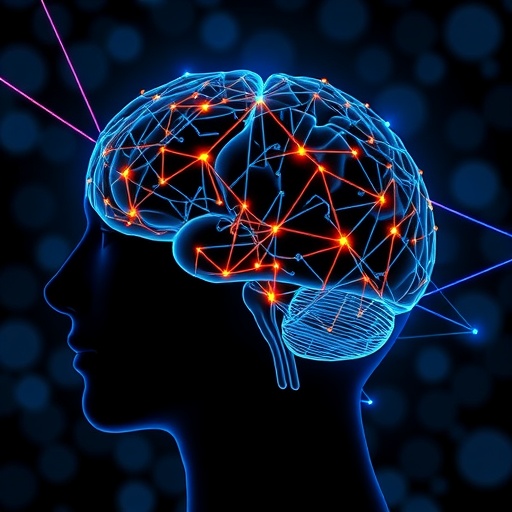In the quest to unravel the complexities underlying treatment responses in major depressive disorder (MDD), a recently published meta-analysis sheds new light on the predictive potential of resting-state functional connectivity (rsFC) as a biomarker. This comprehensive synthesis of 16 studies encompassing nearly 900 MDD patients delves into how baseline brain connectivity patterns could forecast therapeutic outcomes of prevalent interventions such as antidepressants, cognitive behavioral therapy, and non-invasive brain stimulation. The findings promise nuanced insights but also underscore the challenges and limitations inherent in harnessing rsFC for precision psychiatry.
Resting-state functional connectivity reflects spontaneous neural activity correlations across distinct brain regions when an individual is not engaged in a specific task. By capturing intrinsic network dynamics, rsFC measurements hold appeal as non-invasive windows into neurobiological substrates of psychiatric illnesses. Among the brain circuits scrutinized in this meta-analysis, two networks—the default mode network (DMN) and the frontoparietal network (FPN)—emerge as foci given their well-documented involvement in mood regulation, executive function, and self-referential processing. Disruptions in these circuits have been implicated in MDD pathophysiology, making them compelling candidates for biomarker research.
Pooling data from nine studies that examined rsFC between the DMN and FPN, and separately within the DMN, the meta-analysis reports differential predictive patterns. The connectivity within the DMN demonstrated a modest yet statistically significant positive predictive effect on antidepressant treatment outcomes. Contrarily, rsFC between the DMN and FPN exhibited a small but non-significant overall association. These divergent results hint at the possibility that distinct neural pathways may underpin responses to different forms of therapy, emphasizing the need for treatment-specific biomarkers rather than a one-size-fits-all approach.
Notably, the study highlights that the predictive utility of rsFC varies with intervention type. For instance, the connectivity between the DMN and FPN showed a stronger negative correlation with outcomes of non-invasive brain stimulation therapies, such as transcranial magnetic stimulation (TMS). In contrast, the within-DMN connectivity’s positive association was more robust in predicting antidepressant efficacy. This nuanced differential effect suggests that baseline rsFC features could eventually tailor treatment selection, sparing patients prolonged trial-and-error periods that currently characterize MDD management.
Despite these promising signals, the analysis tempers enthusiasm by acknowledging the relatively small effect sizes. The predictive coefficients, while statistically significant in some cases, indicate limited clinical utility at present. This limitation may stem from methodological heterogeneity across included studies, encompassing variations in sample demographics, imaging protocols, analytic pipelines, and clinical scales. Such inconsistencies pose substantial barriers to establishing standardized rsFC markers with broad applicability.
Moreover, the meta-analysis underscores the inherent complexity of MDD as a multifactorial disorder, wherein neural connectivity patterns alone may account for only a fraction of the variance in treatment response. Factors such as genetic predisposition, environmental influences, comorbidities, and psychosocial components likely interplay intricately with brain network dynamics. This multifaceted nature advocates for integrative biomarker models that incorporate neuroimaging data alongside molecular, behavioral, and clinical dimensions.
This work also emphasizes the pressing need for harmonized, large-scale, longitudinal datasets to enhance the robustness of rsFC-based predictions. Future research trajectories may benefit from standardized imaging acquisition, preprocessing pipelines, and consensus on clinical outcome measures. Applying machine learning and advanced multivariate techniques could further unravel complex, non-linear relationships between connectivity patterns and therapeutic response phenotypes.
Apart from antidepressants and brain stimulation, other intervention modalities currently underrepresented in rsFC biomarker studies warrant exploration. Cognitive behavioral therapy and novel treatments, including psychedelic-assisted psychotherapy and neuromodulatory techniques, remain to be scrutinized regarding their interaction with baseline brain connectivity. Understanding whether rsFC predicts outcomes differentially across such diverse therapeutic landscapes will be pivotal in refining personalized MDD treatment strategies.
Furthermore, dissecting the temporal stability and plasticity of rsFC patterns post-treatment may unravel mechanistic pathways of symptom amelioration. Tracking dynamic connectivity changes longitudinally could provide not only prognostic insights but also real-time markers of therapeutic engagement, facilitating adaptive treatment adjustments.
As advances in neuroimaging hardware and computational modeling accelerate, the integration of multimodal brain data—incorporating structural, functional, and metabolic measures—holds promise to contextualize rsFC findings within broader neurobiological frameworks. This integrative perspective is critical for translating connectivity biomarkers from bench to bedside effectively.
In summation, this meta-analysis constitutes a seminal effort charting the complex terrain of resting-state functional connectivity as a predictive biomarker in major depressive disorder treatment. While the observed predictive effects are subtle and context-dependent, the study delineates critical avenues for future inquiry. Ultimately, precision psychiatry’s aspiration to tailor interventions to individual neurobiological profiles depends on advancing such foundational work to more reliable and clinically actionable biomarkers.
Resolving the limitations outlined by the authors will require concerted collaboration across neuroimaging consortia, clinicians, and computational scientists. Only through rigorous methodological standardization and larger, diverse cohorts can resting-state functional connectivity fulfill its potential as a transformative tool in managing the global burden of depression. The evolving landscape promises to redefine therapeutic paradigms, reduce treatment-resistant cases, and enhance patient outcomes by unlocking the brain’s intrinsic connectivity fingerprints.
—
Subject of Research: Predictive utility of baseline resting-state functional connectivity in determining treatment outcomes for major depressive disorder interventions.
Article Title: Predicting the treatment outcomes of major depressive disorder interventions with baseline resting-state functional connectivity: a meta-analysis.
Article References:
Zhou, Y., Dong, N., Lei, L. et al. Predicting the treatment outcomes of major depressive disorder interventions with baseline resting-state functional connectivity: a meta-analysis. BMC Psychiatry 25, 340 (2025). https://doi.org/10.1186/s12888-025-06728-0
Image Credits: AI Generated
DOI: https://doi.org/10.1186/s12888-025-06728-0




